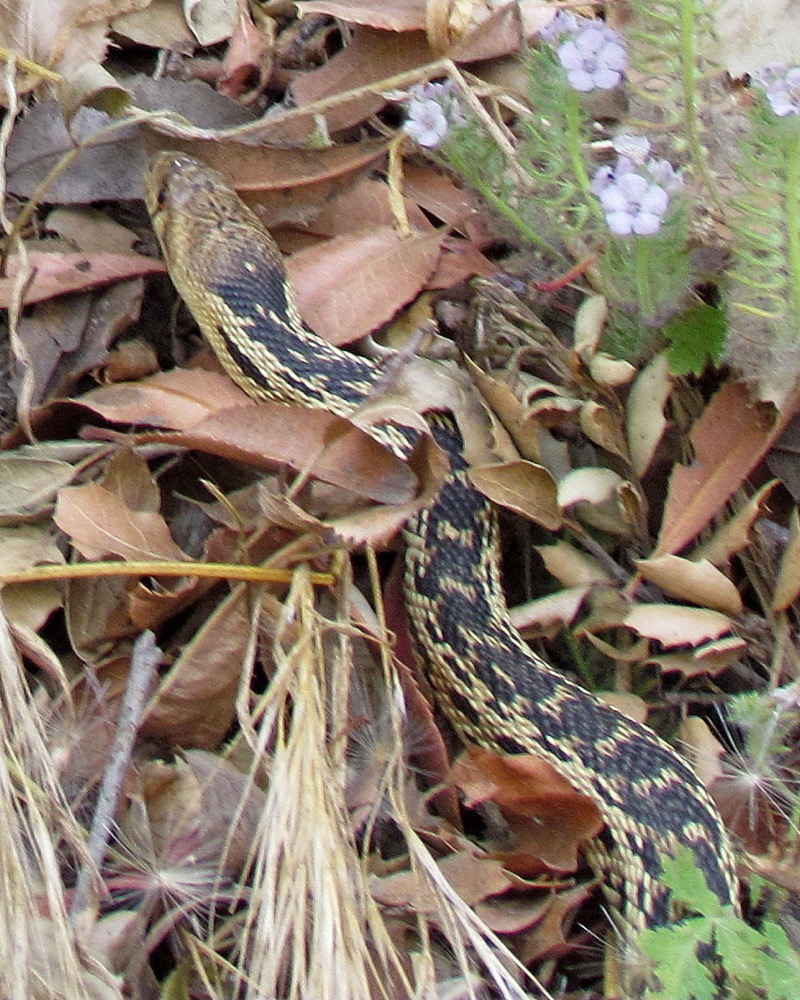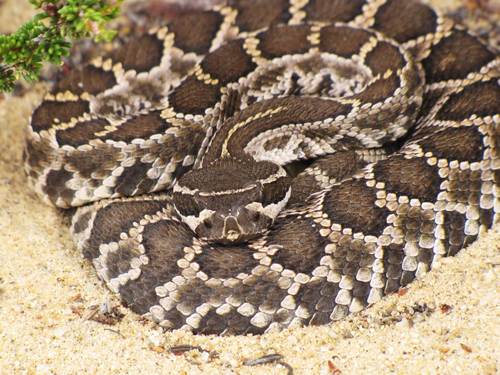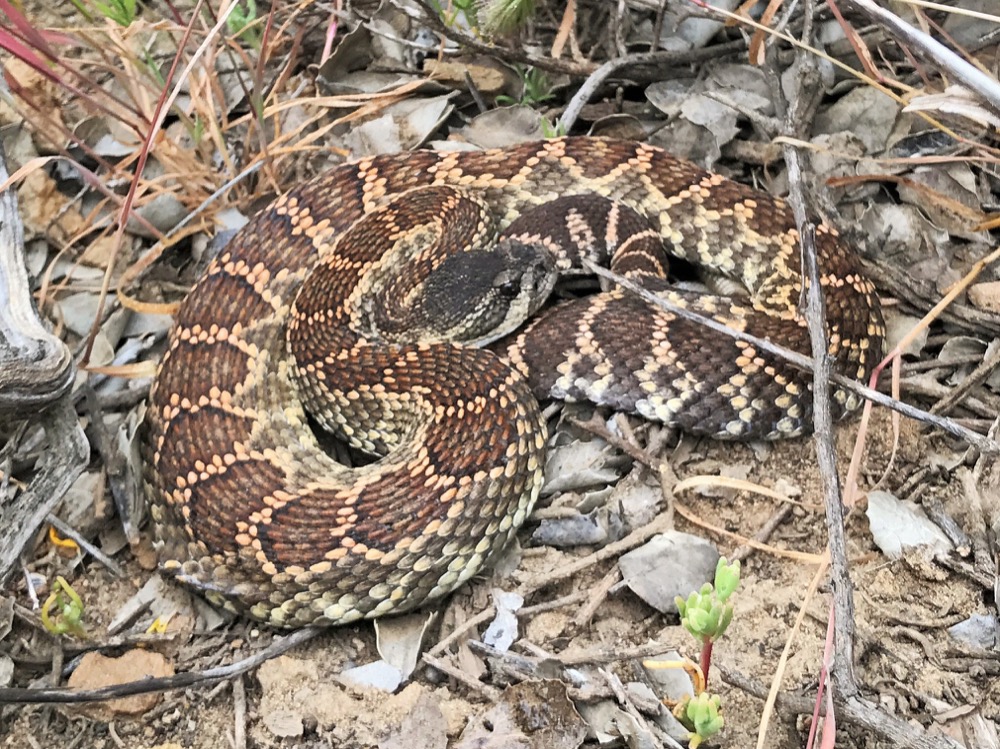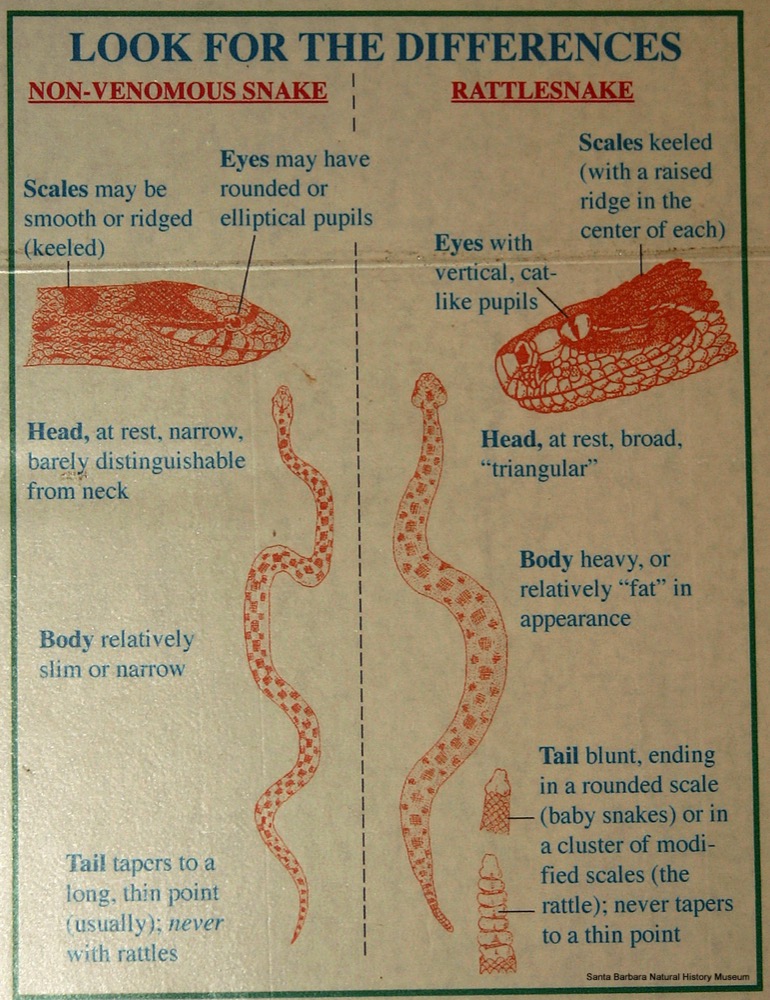It’s been a year of abundance at Cabrillo National Monument. Above-average rainfall has made our native vegetation flourish, and with the plethora of plants has come an affluence of insects which, in turn, has triggered a profusion of small mammals. The boom doesn’t stop there, however – with an excess of prey species comes an increase in predators. This includes the five snake species that call the monument home. One of these species, the San Diego Gopher Snake (Pituophis catenifer annectens), is a snake that has mistakenly received a bad rap (more on this later) and we’d like to set the record straight.
 Photo courtesy of californiaherps.com – A San Diego Gopher Snake crossing a trail.
Photo courtesy of californiaherps.com – A San Diego Gopher Snake crossing a trail.
San Diego Gopher Snakes are a non-venomous snake that keeps prey populations in check. Considered a generalist predator, gopher snakes will happily eat all small mammals (mice, rats, gophers, etc.), birds and bird eggs, lizards, insects, and the occasional snake. Their diet is reflective of the fact that they are great burrowers, swimmers, and even climbers! Once they’ve secured their prey in their mouth, they use constriction to suffocate it to death, much like boa constrictors and pythons do. With fast metabolisms, gopher snakes prefer to eat at least once a week during months they are not hibernating, but can go for longer without food if necessary. If you find a gopher snake in your yard, it’s there hunting – leave it be and it will trim down all of the rodents that are destroying your garden, stealing your fruit, and carving up your lawn.
Unfortunately for gopher snakes, people often mistake them for rattlesnakes. This can happen for two reasons: similar physical characteristics and similar behavior. At a cursory glance, gopher snakes have a comparable pattern and size to that of a rattlesnake - they can grow up to nine feet long, though the average size of an adult gopher snake in San Diego County is that of five feet. Upon closer examination, however, the dorsal (back) pattern of a gopher snake is more in the shape of a rectangular chain rather than the circles or diamonds spread down the back of a rattlesnake. In fact, the scientific name of a gopher snake, Pituophis catenifer, means “chain-bearing tree snake”.
 Photo courtesy of iNaturalist, user gregslak – A nice glimpse of the small head and dorsal “chain” pattern of a gopher snake in the leaves.
Photo courtesy of iNaturalist, user gregslak – A nice glimpse of the small head and dorsal “chain” pattern of a gopher snake in the leaves.

NPS photo – A close-up of the large triangular head of a Southern Pacific Rattlesnake (Crotalus oreganus helleri).

There are other physical differences between gopher snakes and rattlesnakes. One easily identifiable distinguishing characteristic is that gopher snakes lack a rattle! In fact, a gopher snake’s tail is long, skinny, and pointed, which is very different from the fat rattle on a rattlesnake’s tail. A second distinguishing characteristic between the two snake species is that of the size of the head – gopher snakes have heads as slender as their necks, while rattlesnakes have large spade or triangular-shaped heads (the better to house those large fangs and venom sacks). A third, and more subtle, characteristic lies in the shape of the snake’s pupil: gopher snakes are chase-predators that need to see well to chase down their prey, hence they have large, round pupils. Conversely, rattlesnakes are ambush predators that have pupil-slits like those of a cat.
As stated previously, gopher snakes sometimes exhibit behavior that can be confusing to laymen – when threatened, they pretend to be a rattlesnake! This type of behavior is called biomimicry - when one species mimics, or pretends to be, a different species for protection. Gopher snakes coil up, flatten their head out, shake their tail (the reverberations of which create a quiet buzzing noise), and even hiss. They do this as a last-ditch effort to fool the “threat” into thinking they are a dangerous, venomous rattlesnake. Unfortunately for gopher snakes, this biomimicry can be all-too effective at confusing humans who sometimes unnecessarily kill them out of fear.
 Photo courtesy of californiaherps.com – A schematic that shows the key differences between gopher snakes and rattlesnakes.
Photo courtesy of californiaherps.com – A schematic that shows the key differences between gopher snakes and rattlesnakes.
This time of year, San Diego Gopher Snakes are really active and highly mobile as they are out searching for mates. We have seen several large gopher snakes crossing our roads at Cabrillo National Monument, or laying out on the hot asphalt which is a common method for them to gain their heat for the day (a process called thermoregulation). Be careful as you’re driving around open areas of native habitat, like our park – that stick in the road might not be a stick at all, but your friendly neighborhood gopher snake! The mission of the National Park Service is to preserve and protect all of our native species – we brake for snakes, and we hope that you will, too.
References
Everything about Gopher Snakes, including the San Diego subspecies:
http://www.californiaherps.com/snakes/pages/p.c.annectens.html
https://www.livescience.com/53484-gopher-snake.html
https://www.desertusa.com/reptiles/gopher-snake.html
Round Pupils vs. Slit Pupils:
https://www.newscientist.com/article/dn19273-slit-pupils-help-snakes-ambush-their-prey/
